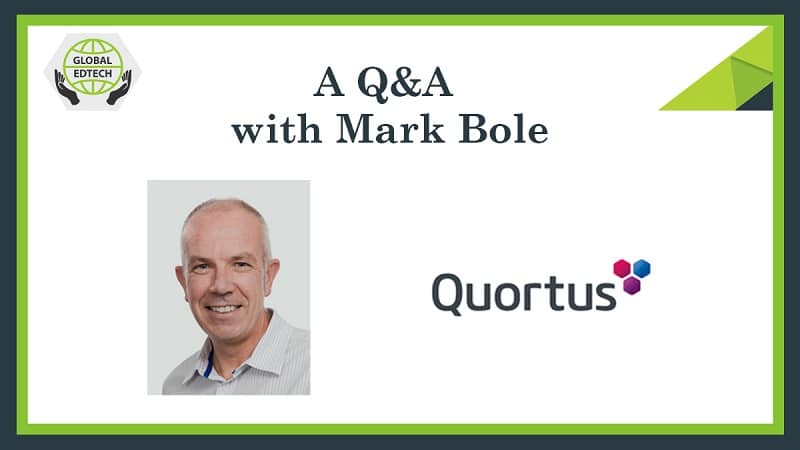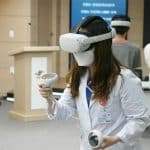May 30, 2021
In this article we interview Mark Bole, CEO of Quortus. Mark discusses how the partnership between Quortus and the Utah Education and Telehealth Network (UETN) has helped address the digital divide across the state.

Mark please can you introduce yourself and your role at Quortus
I’m Mark Bole, CEO of Quortus since September 2018. I joined the company to focus on the commercial opportunities in the expanding private wireless and software based mobile network business.
I’ve accrued over 30 years of experience in the mobile and technology industries. Previously I’ve been the CEO of several successful start-ups involved in various sectors of the technology industry, including mobile core networks, mobile social media consumer services, digital marketing and intellectual property.
Please can you tell us about how Quortus and UETN are addressing the digital divide?
The shift from in-class teaching to remote attendance has really exacerbated the ‘digital divide’. Quortus and UETN’s strategic partnership is all about mitigating this problem and minimizing disruption to student’s education. Given that many students have been forced to study remotely, they’re now heavily reliant on their devices and on connectivity to attend virtual classes. But unfortunately, not all students will have the same device, and not all will benefit from the same levels of connectivity or quality of service, meaning individual learning experiences can be seriously hampered, further deepening the digital divide.
The alternative to students relying on public network infrastructure, be it cellular or Wi-Fi, is Private LTE networks. Private LTE provides greater control to educational sites meaning that guarantees can be placed on coverage, capacity and quality of service and experience. What’s more, fewer access points than Wi-Fi means Private LTE networks are easier and cheaper to manage. Private LTE networks also have greater security benefits, a key requirement for educational facilities sharing files and data between sites, students and staff.
By providing UETN with this Private LTE network infrastructure, Quortus and TLC Communications are going beyond providing connectivity and are actually democratizing network access for the benefit of UETN’s students and staff, a key part of addressing the digital divide.
RECOMMENDED: https://global-edtech.com/category/community/
How do you think this implementation will help the educational community post COVID?
Well of course, COVID-19’s impact on life as we know it has been profound, but it has served as the catalyst for the education community to critically look at and re-assess its existing communications infrastructure and find ways to modernize it so that it becomes more ‘fit for purpose’.
To overcome the short-term challenges posed by the pandemic, K-12 communities and higher education colleges needed reliable, secure and high-quality connectivity. Actually, these are all elements that are essential for a modernized connected education experience anyway, so in this sense the benefits delivered by this implementation have set a new standard, or created the blueprint even, for how schools and colleges operate going forward.
Digital transformation is a term widely used and explored across multiple verticals, but it’s also apposite for the education sector. This is especially true as they adapt to the latest technical innovations to enhance the learning experience and better prepare students for their post-education lives in the digital economy. As a result of this implementation with UETN and TLC Communications, we were able to provide K-12 communities and colleges across Utah with highly reliable connections, robust coverage and resilient security capabilities, all of which allow for greater operational control and flexible learning. I believe that is the legacy of this project.
Do you think the technology will be affordable for educational institutions in the long term?
When you look at economies of scale, Private LTE has the advantage over the alternatives due to its well established, high volume, world-wide ecosystem leading to highly cost-efficient network infrastructure and lower cost of ownership. With Private LTE networks, there are no recurring data costs associated with the large volumes of data shared over the school and college networks.
Admittedly, in some cases, Private LTE can have higher initial costs, but its ability to scale with the size and needs of schools and colleges, combined with its operational efficiencies makes it a cost-effective investment over the long term. Overall, it is the sustainable option for the education community.
What are the valuable lessons that school leaders should learn from the pandemic?
You could probably do a whole MBA on this! But I think that the pandemic has provided the education sector with an opportunity to re-define the teaching and learning experience. This is what school leaders need to tap into and capitalize on once ‘normal’ life resumes. We now have the means to establish a more user-centric experience that delivers overall flexibility to the learner, at the same time as achieving high levels of network security, control and optimisation. Private LTE can deliver the capacity, bandwidth and low latency required to support applications such as virtual, augmented, and extended reality that can enhance the remote learning experience.
Another disruptive approach to the learning experience has been the way students are now able to consume class content according to their own schedule. So in many ways, they are no longer bound by the classroom timetable. Classes and lectures that are streamed online can be recorded and then made available on demand, giving students greater flexibility. Having a network that can handle more content being streamed in real-time and on-demand will be critical in years to come.
The pandemic has had a significant effect on the way we work and learn. Whilst we all look forward to returning to more in-person experiences, no doubt many of these changes are here to stay. The transformations imposed on the education sector as a result of the COVID-19 crisis have provided school leaders with an opportunity to optimize the learning experience in a more user-centric way and have placed great emphasis on connectivity and their existing network infrastructure.













